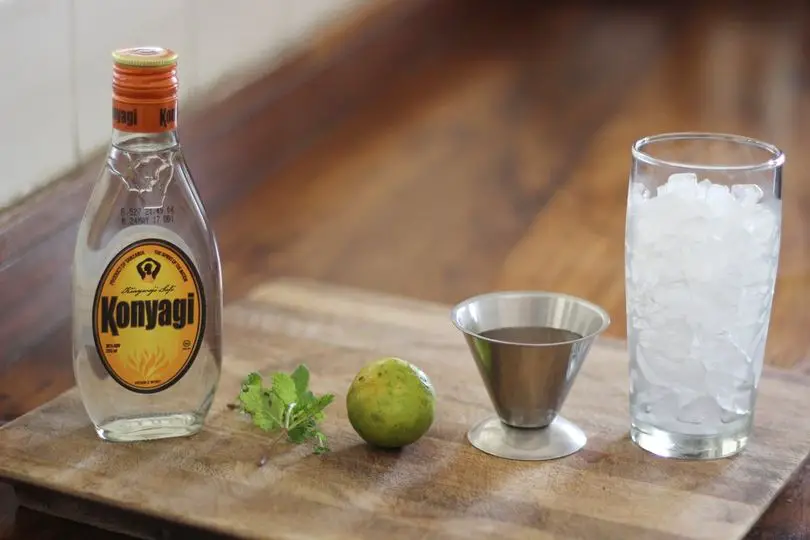Konyagi Meaning in English
Konyagi is a brand of Tanzanian spirit. It is a popular alcoholic beverage in Tanzania and is known for its strong and distinctive flavor.
To the best of my knowledge, bottled Konyagi was named after, enkonyagi, a delicious(!) banana gin made by the Haya people of northwestern Tanzania. (In case you don’t know, I am Haya…woot woot!!)
Enkonyagi is derived from the word “Cognac“.
Konyagi Origin
My father tells me that in the late sixties (or at least when he was at university and he graduated in 1970), Tanzania Distilleries held a competition to name a new spirit that they’d soon be launching.
The late Mr. Leonidas Joseph Mutashobya (R.I.P.), our neighbor from across the street in Kamachumu Village in Kagera, submitted the entry Konyagi—the Swahilinized version of enkonyagi—and won.
As they say, the rest is history.
READ ALSO: 40 “Summer” Tanzania Pictures
Table of Contents
What Is Konyagi The Spirit of Africa?
Konyagi, produced by Tanzania Distilleries Limited (a subsidiary of Tanzania Breweries Limited), is a white (clear) spirit made from molasses (sugarcane).
Interesting Tidbits About Konyagi Tanzania
Konyagi is not only a popular alcoholic beverage in Tanzania but also has some interesting aspects and history associated with it:
1. National Drink of Tanzania: Konyagi is often referred to as the “national drink” of Tanzania. It has gained widespread popularity in the country and is enjoyed by both locals and tourists.
2. Origin: Konyagi was originally developed in the 1970s by the Tanzanian government as a locally-produced alternative to imported spirits. Its creation was aimed at promoting domestic production and reducing the importation of foreign alcoholic beverages.
3. Unique Flavor: Konyagi has a unique and distinctive flavor that sets it apart from traditional rums. Its flavor profile is often described as somewhat citrusy with a slightly medicinal note. This uniqueness makes it a sought-after drink among those looking to try something different.
Konyagi Fusion
Konyagi Fusion is a variant of the traditional Konyagi spirit.
It is a flavored version of Konyagi, infused with different flavors to appeal to a broader audience and offer a different tasting experience.
The “Fusion” line includes two versions—coconut and ginger & lemon—making it a versatile choice for cocktails and mixed drinks.
The aim is to provide a refreshing and modern twist on the classic Konyagi spirit, catering to changing consumer preferences and trends.
I have had Konyagi Fusion (the ginger and lemon flavour) before and I don’t like it at all. I wouldn’t bother trying Konyagi Fusion again.
Do any of you particularly like Konyagi Fusion? If so, which flavour do you prefer?
Konyagi Zanzibar: Is Konyagi Available in Zanzibar?
Yes. Just as it’s available elsewhere in Tanzania, Konyagi is available in Zanzibar too.
Is Konyagi Gin?
Because Konyagi is made of molasses, it is technically a rum.
Where to Buy Konyagi in US: Is Konyagi Available in US?
Yes, Konyagi is available in the US. To find out where, click here.
Konyagi Tanzania Ingredients
If you would like to know the exact ingredients in Tanzania Konyagi, click here.
The Inspiration Behind This Post
Not too long ago, I met up for the first time with a reader of this blog who recently relocated to Dar es Salaam from Kampala.

Although we had never met before, we found that we had a lot in common including that our parents had completed their graduate studies at the same university in the U.S. (at the same time and even knew each other) and that we shared a common friend.
Our first encounter was an interesting one where we shared our life stories and spoke about things we could both relate to, such as the differences and similarities between life in Uganda and Tanzania.
This we discussed at length.
Our discussion went as far as to include the spirits produced in each country.
My new acquaintance and I were both familiar with Uganda Waragi, the Ugandan spirit. She had never tasted Konyagi, Uganda Waragi’s Tanzanian counterpart.
She asked me how I thought the two compared.
That question was the inspiration for this post.
READ ALSO: Fairway Hotel Kampala Menu & More About the Hotel
Photo Credits: Zambia Daily Mail
